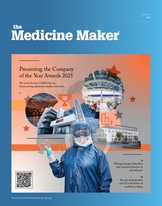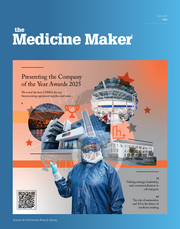Open Door IP
Intellectual property issues have suffocated many industry collaborations. And though IP is clearly valuable to pharma companies, there is also value in learning to let go.
By 2020, 10 percent of the global population is expected to be aged 65 years and older. In fact, the rapid increase in the aging population is a critical trend in the life sciences industry right now, because the elderly typically have more healthcare needs. In particular, there is a drive to address age-related diseases, such as cancer and Alzheimer’s, but these significant challenges cannot be tackled by one stakeholder alone. There has never been a stronger need to collaborate.
However, collaborations, although commonplace in our industry, are not easy to get off the ground. After all, big pharma is based on big business, so all collaborations need to get over the first hurdle: negotiation. Each party involved is likely to have differing interests and, unsurprisingly, many collaborations fail miserably before they even begin – sacrificed at the negotiation alter, with the death blow usually delivered by the intellectual property (IP) rights section of the agreement. Far too often, I’ve seen companies with IP strategies that do not mesh well with a collaborative business strategy.
Successful IP management is, in essence, about using IP to achieve your business targets, thereby creating value for your company’s shareholders. Pharma is traditionally an IP-intensive industry – and for good reason; the large investments needed to develop a novel drug demand that companies secure any innovation through IP to ensure that those investments are recouped in the market.
But in my view, this is all set to change. The evolving infrastructure and challenges facing the life sciences industry will also affect how players approach their IP. Other tech-intensive industries have undergone similar changes; for example, we have seen a decline in focus on patents at tech companies with strategies instead centering around the notion that innovation needs to happen quickly – and that means in broad collaboration with other players. This is a far cry from pharma’s gold standard: the coveted composition patent. I think there’s a lot we can learn from these tech companies.
Fortunately, I think that the pharma industry is becoming increasingly open to ways to boost collaboration. As one example, we’re seeing an increasing focus on open innovation (as emphasized in a recent cover feature in The Medicine Maker, http://tmm.txp.to/0316/Nilsson), and companies and academic institutes alike are offering innovation and R&D (as captured in their IP) to the public for further collaboration and development.
Developing platforms for this type of exchange is important. I think WIPO Re:Search is one good example of a multi-stakeholder platform. In 2011, a database was established by the World Intellectual Property Organization in collaboration with BIO Ventures for Global Health – and with the active participation of leading pharmaceutical companies and other private and public sector research organizations. The database provides information on the IP assets available for licensing, including compounds and enabling technologies, and the aim of the platform is to facilitate collaborations that can help fight neglected tropical diseases, malaria, and tuberculosis. The database demonstrates the commitment of the industry to solve some of the major challenges facing humanity with respect to these diseases.
The collaborative partnering and networking approach that we have seen in other industries should act as a healthy influence that can help us achieve even more in the life science fields. The outsourcing of R&D to smaller maverick players has also been trending for a while, and I believe that the interests of both big pharma companies and the smaller ones are aligned; both sides recognize the need for the others’ contribution. The question is of course whether we can take this type of partnering to the next level, and develop communities that can cooperate in a structured way. BASF is currently exploring ecosystems – basically, small business networks – where selected players are invited to participate and achieve various goals. I like this approach and encourage others to try. Even when legal and IP challenges arise, flexible solutions can always be found.
Some think of open innovation as being contrary to good IP strategy and management. In my opinion, this is not the case. It is simply about dealing with reality and opening the door to a new environment.
Charlotte Berg-Svendsen is Vice President of Legal and IP at BASF Nutrition and Health, Norway.



















